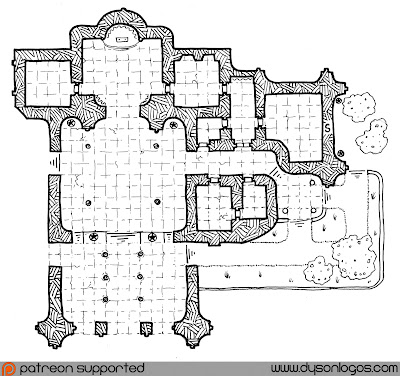Reflecting today, it struck me how my journey into the TTRPG hobby is similar yet different from the evolution of the hobby. Most people now have played plenty of videogame RPGs or games that have RPG elements or influence. But unlike many of my friends, I didn't play games like Skyrim or others. I never played, but had a friend who played RuneScape while we were kids and I remember spending a fair amount of time watching over his shoulder.
Really, I enjoyed building and playing with Legos, probably predisposing me to a fascination with miniatures (although I don't collect miniature largely due to the cost and space to store them). So one day as a kid I stumbled upon the rules and their earlier variations of Brik Wars.
BrikWars cover art by Mike Rayhawk
While I never played, mostly because I could never find anyone interested in learning the rules and taking the time to do so, I remained fascinated by wargaming. Throw in my abiding interested in military history, and it's no surprise that I really was more interested in tactical RTS games, like Age of Empires in its many flavors. I spent many happy hours with Age of Mythology and played the Lord of the Rings RTS game at a friend's house that you can now no long find anywhere due to the expired licensing.
Eventually I discovered the Total War games, which still strike me as perhaps the best blend possible of a strategic and persistent overworld in which year construction and empire-building matter, combined with a more realistic tactical game than the scrums of declining hit points in most RTS games. Total War units feel like they are full of men, each fighting and dying one by one, while remaining part of an organized mass. Maintaining organization and correct maneuver, alongside using the battlefield terrain and the right equiped units is key to victory, just like in the real world. The original Total War: Rome and Medieval 2: Total War remain perhaps my favorite games of all time, despite the later advancements to the series. I also spent literally hundreds of hours conquering Europe and the New World as Britain, Prussia, and Spain in Empire: Total War.
The closest game to an RPG I played during this period were Zelda: Twilight Princess and Skyward Sword on the Wii. These were fun, but I found the puzzles and linear dungeon progressions tedious at times. I wanted to punch through much of the time and get to the storytelling, exploration, and combat portions. I loved my time in those worlds though.
I tried Sid Meier's Civilization V, but never really got into it. Later however, I discovered Paradox's excellent games like Stellaris. I never played Europa Universalis, instead spending most of my time in the sci-fi galaxy of Stellaris. The latter focuses mostly on exploration, then research and technological development on a civilizational scale, in an ever advancing arms race towards eventually conflict with neighbors. Fleets and power levels matter more than individual ships and tactics in that grand strategy of space opera. But I often thought about how interesting it would be to be able to zoom in on a character in a battle while still conducting the grand strategy level.
COVID lockdown proved to be a good time to try out other games with greater RPG-like elements. I played my way through the entire Assassin's Creed series available at that time. Ezio remains a favorite character from the genre along with the landscapes of Florence, Rome, and Constantinople—I would still love to see the Hagia Sophia, having gotten to climb the minarets virtually in the game. I think the closest to true RPGs of that series are Origins and Odyssey though. I would love to try Valhalla at some point.
From there, I tried out Dragon Age: Inquisition, which is very much an RPG. I don’t feel like I ever fully grasped the game, and I’d like to go back and finish the story at some point. Then I also tried out The Witch 3: Wildhunt, which I think remains a masterpiece of a game.
In all this time, I’d never tried D&D. I remember reading about it briefly during the 4e era, but didn’t feel particularly interested at the time. After COVID I began looking at Warhammer 40k, watching videos of miniature painting. But I also noticed some of the channels I followed painting D&D miniatures. I’d noticed the Lost Mine of Phandelver starter set at my local Target before, but I began really looking at it, and one day bought it. This was rapidly followed up with a Player’s Handbook, and the other core books. The rest is history. And hopefully much more fun times with friends and family.


































